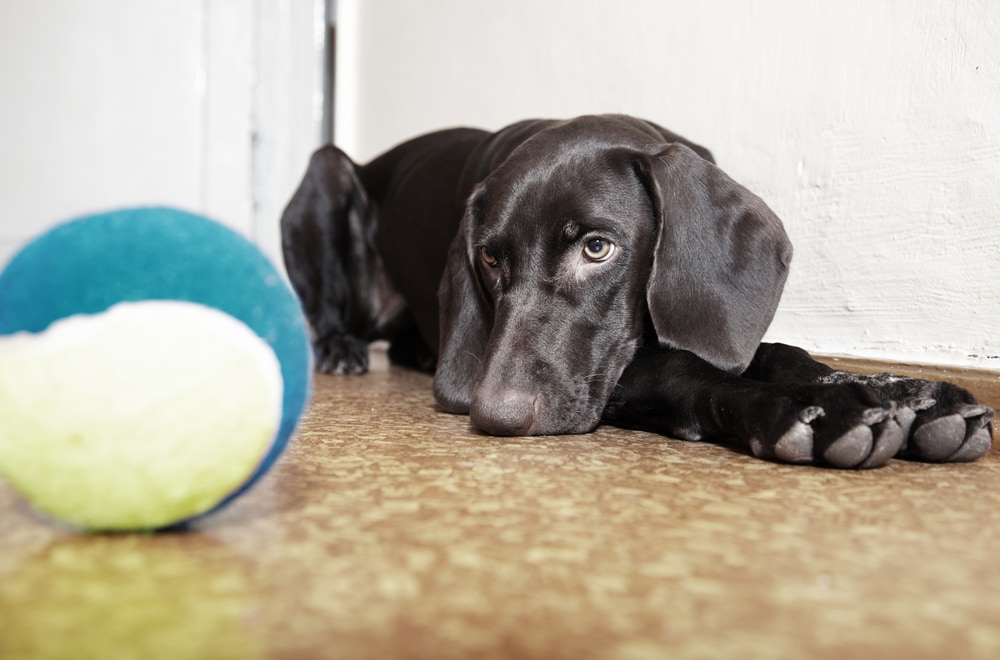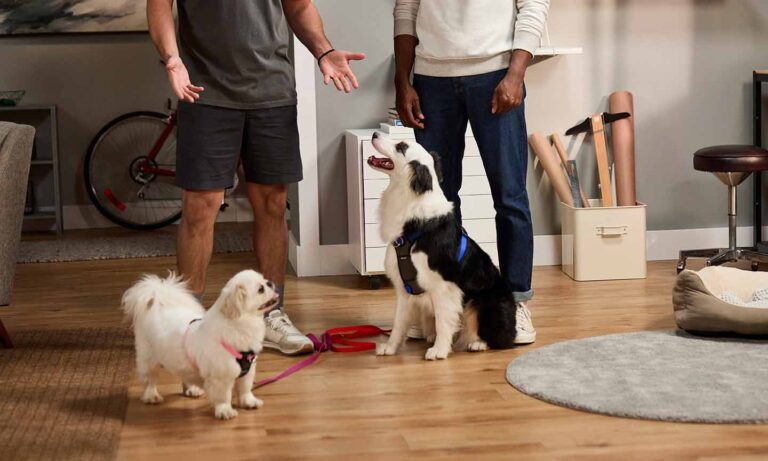Q.
We got a 1½ -to 2-year-old female mixed-breed dog from our local shelter a few days ago. She was found as a stray and our best guess is that she is a German Shepherd-Labrador mix. She has near perfect behavior, comes when called, is housebroken and doesn’t chew. The only problem is we cannot get her to play.
She only wants to be petted and always flops on her back. She will slowly paw you with one foot to get you to pet her, and occasionally will slowly put both feet up on you when she really wants your attention. She also makes a moaning whine when we come home and when we go outside. I do not know if this is a happy or sad moan. She will not tug on a rope or chase any of her dog toy balls. Though sometimes there is a spark of interest but then she walks away into a corner. It is hard to work on any training to build up her self-esteem because she is not interested in any food or treats and when you give her praise, she flops on her back, tail between her legs. Any ideas on how to get her to come out of her shell?
A.
Congratulations on the adoption of your rescue dog. Lucky for her, you fell in love with this sweet animal and took her home. She has no idea who you are, where she is, what your intentions are or what will happen next. She will need time to adjust to her new surroundings, but there are some things that you can do to help her along.
When an animal is frightened, it will do what is the most familiar in order to provide comfort — for example, following obedience commands. If she knows basic commands, complying with them is easy and will provide a sense of stability and at the most will result in calm positive touch or a treat.
Play is less structured, involves higher energy and puts her in a much more vulnerable position. It is not unlike a person uncomfortable in a new setting who may sit and talk politely at a table but may not be ready to get up and dance until they feel more at ease.
You are not responsible for her past, only her future. Don’t try to compensate with a lot of attention and affection; this can make a scared dog more nervous. “Less is more” when it comes to scared dogs. Setting up a routine that addresses her needs will provide much needed stability and allow you to ignore her at other times.
When you ignore a frightened dog, you are sending it what are known as calming signals, letting the dog know you are not going to force yourself on her in any way. This allows the dog to relax and warm up on her own time. If the dog receives constant random attention when you are with her, when you leave, she not only misses your presence but the attention that goes with it, which may result separation anxiety. It is also a good idea to ignore and not encourage jumping since this can become a problem behavior.
Her whining is most likely a stress response, as is yawning, repetitive sneezing and licking her lips or panting. When the dog becomes more comfortable in your house this response will subside. You should consider enrolling in a class that would provide social interaction with other dogs. This will help build her confidence. Once you’re comfortable with her interaction with other dogs, you can take her for play dates at a local dog park. Best of luck with your new best friend.
Posted By: Chewy Editorial
Featured Image: Via Arman Novic/Shutterstock
Share:









